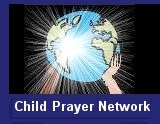 |
Contact usUnited Caribbean TrustReconstructionThe Building SystemDevelopments
UCT Guyana visit |
home >> united caribbean
trust UNITED CARIBBEAN TRUST - Insurance Most insurance companies are very happy to provide insurance policies for these projects at a level lower than premiums for conventionally built structures. A fully engineered building, such as this structure, is a better risk than a structure that may not be engineered to resist the forces of Nature. These buildings have consistently resisted hurricanes, typhoons, earth tremors and fire throughout the world without any structural damage for over 10 years. The engineering and materials employed in the floor, wall and roof system are fully guaranteed for structural integrity. They are manufactured to an ISO 90001 standard for Quality Assurance. The building system also carries a US $14,000,000 product and public liability cover for every building. Wood products are not used for the structural components of the buildings, thereby reducing the potential damage from fire. The wall panels are covered with a non-flammable fiber-cement board and have received the best flame spread rating available. By utilizing the fiber-cement board as the subfloor sheeting on top of the galvanized floor system, the entire structure will receive the most favorable fire resistant rating available, which will help reduce the insurance premiums. In the U.S. Virgin Islands, these homes have been rated as "superior construction" by a large international insurance firm and therefore are entitled to the lowest residential insurance rate provided by that company. This rate was previously reserved for residences with a poured concrete roof. On St. John, U.S. Virgin Islands, all six of the homes survived the destructive
forces of Hurricane Marilyn in 1995 with no structural damage whatsoever.
Most of the homes were located in areas where conventionally constructed
buildings were severely damaged or completely destroyed. Not one insurance
claim for structural damage has ever been filed for these types of homes
in the Caribbean Region. In the past six years we have witnessed many
billions US dollars of damage from Hurricanes Luis, Marilyn, Bertha, Georges
and Mitch.
On the island of Aruba, a large Dutch insurance company, that suffered tremendous losses due to the damage caused by Hurricane Luis in 1995, has financed and insured the construction of a large medical center that will be completed in 1999. Their thorough review and approval of the this System demonstrates their commitment to building projects that reduce risk by utilizing the best quality materials and the highest engineering standards. The Australian Export Finance and Insurance Corporation (E.F.I.C.) E.F.I.C. will finance the Australian content of the projects to qualified borrowers for projects of a minimum of US $2,000,000. The E.F.I.C. scheme is designed to help governments and developers obtain the financing necessary to get large projects started if capital is tight or costly in their locality. Examples of projects eligible for E.F.I.C. financing: 1) Government Offices The E.F.I.C. scheme will finance 85% of all Australian content including shipping and Australian supplied labor if needed. The loan cannot be used to finance local mortgages. A 15% deposit is required upon application which is held in Escrow pending approval and is fully refundable. Initial applications are approved in 30 days and final approval takes 90 days. The loan period can be up to 10 years and carries either a fixed rate or a floating L.I.B.O.R. rate. Payments are due every 6 months in arrears. A Bank Guarantee is required from an approved Bank. To optimize the loan conditions, you should order as much Australian content as possible. Ordering a large number of component packages will save considerably on shipping costs. A chartered ship to deliver 100-150 homes at a time, will reduce shipping costs 25% to 40%. |

 

 |
| Copyright © 2022 www.UnitedCaribbean.com. All rights reserved. Disclaimer Click to Contact us |